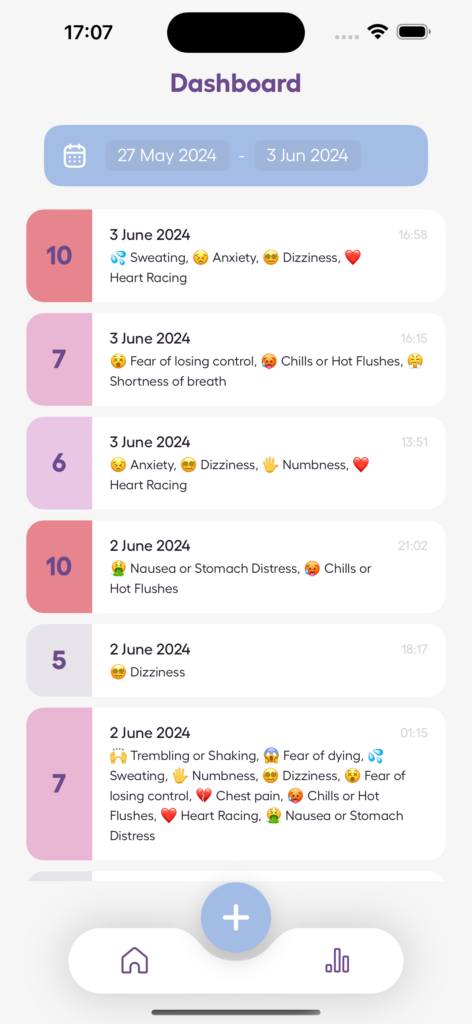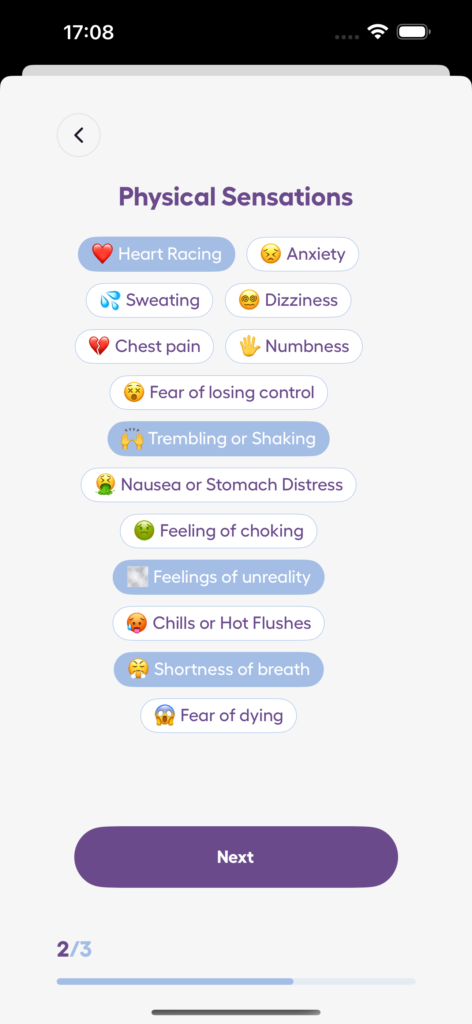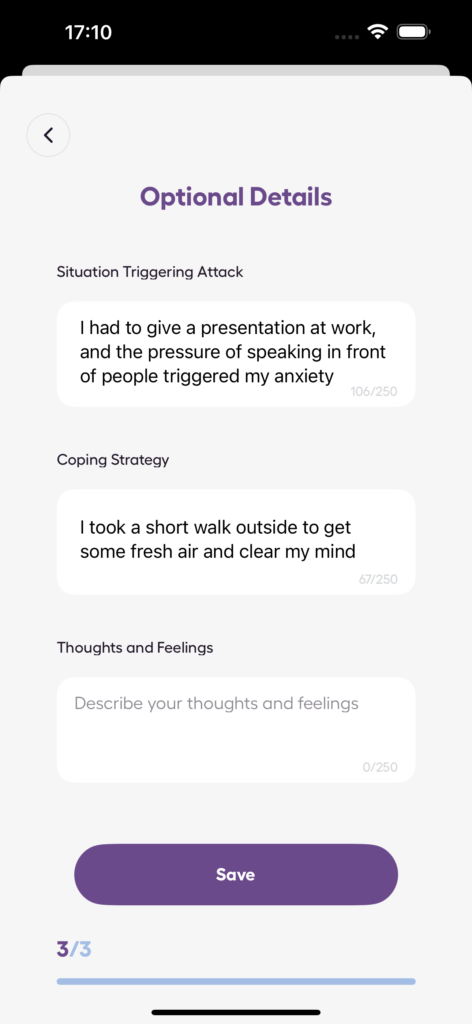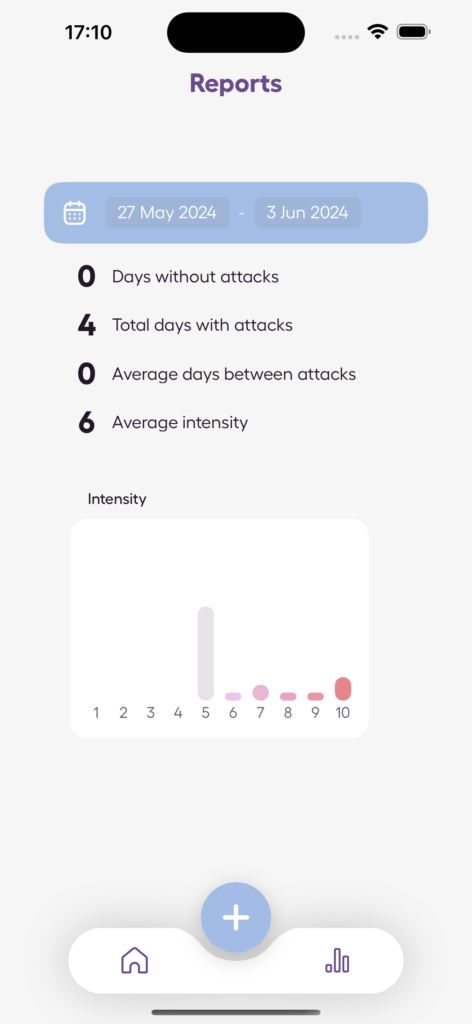Journaling is a simple and effective way to manage anxiety. It helps you process emotions, identify triggers, and reduce stress by organizing your thoughts and breaking the cycle of overthinking. Research shows that journaling can lower anxiety symptoms by up to 42% in just six weeks and even reduce stress hormone levels by 19%.
Key Benefits of Journaling for Anxiety:
- Process Emotions: Write to understand and manage your feelings.
- Break Negative Patterns: Challenge anxious thoughts and reframe them.
- Track Triggers: Identify what causes anxiety and how to address it.
- Boost Positivity: Gratitude journaling shifts your focus to positive aspects of life.
- Improve Mental Health: Regular journaling reduces anxiety, depression, and stress.
How to Start:
- Dedicate 15 minutes, 3 times a week to journaling.
- Choose tools that suit you – traditional notebooks, guided journals, or digital apps.
- Create a calming space for focused writing.
- Use techniques like gratitude lists, thought reframing, and tracking emotional patterns.
Journaling is a flexible, accessible tool that complements professional care. Whether you use a notebook or an app like the Anxiety Journal, consistency is key to seeing results.
Journaling for Anxiety (5 ways you can use a journal NOW)
Getting Started: Building a Daily Journaling Routine
Starting a journaling habit doesn’t have to be complicated. The key is sticking with it. Research from 2018 found that dedicating just 15 minutes to positive affect journaling three times a week can reduce feelings of anxiety and stress while building resilience. This means you don’t need to write lengthy entries every day – small and consistent efforts can make a big difference over time.
Pick a habit that works for you. Before diving into specific techniques, focus on creating a foundation for daily practice. Start by figuring out your "why" and selecting tools that make journaling feel approachable rather than overwhelming.
Choosing the Right Tools
The tools you choose for journaling can have a huge impact on whether the habit sticks. Whether you prefer a digital or analog approach, each option has its own benefits for managing anxiety.
Traditional notebooks provide a calming, hands-on experience. When choosing one, think about the size, design, and paper quality. A notebook that’s easy to carry encourages you to jot down thoughts wherever you are, and good paper can make the process more enjoyable.
Guided journals are a great starting point if you’re unsure what to write about. They often include prompts and checklists tailored to anxiety management, helping you reflect in a productive way. However, they may feel limiting if you prefer open-ended writing.
Plain notebooks give you complete freedom to shape your journaling routine. You can try out different techniques, switch styles, and adapt your approach as your needs evolve.
Digital tools like the Anxiety Journal app offer unique features. These apps can track mood patterns, identify triggers, and provide insights over time. For example, the Anxiety Journal app helps you monitor emotional and physical trends, making it easier to connect specific situations with your anxiety levels. Plus, having it on your smartphone ensures it’s always accessible – no more excuses about leaving your journal at home.
"Keeping a journal helps you create order when your world feels like it’s in chaos. You get to know yourself by revealing your most private fears, thoughts, and feelings." – University of Rochester Medical Center
The best tool is the one you’ll actually use. Once you’ve chosen, it’s time to set up a space that encourages focused journaling.
Setting Up Your Journaling Space
Your environment plays a big part in making journaling a sustainable habit.
Pick a quiet, clutter-free spot that signals it’s time to reflect. Make sure your seating is comfortable and consider adding calming touches, like a small plant or a scented candle. Establish a regular time for journaling, and don’t hesitate to adjust your location if your routine starts to feel stale.
Minimize distractions by choosing a space away from noise and interruptions. If you have kids, try journaling after they’ve gone to bed or create a quiet corner in your bedroom or even a closet.
"Creating a relaxing place to journal is paramount to sticking with it." – Shell Vera, The Essential Creative
Clear the clutter. A messy space can mirror chaotic thoughts, while an organized area fosters the mental clarity you’re aiming for.
Make your space inviting. Whether you’re journaling on your bed, in an ergonomic chair, or on a cozy floor cushion, comfort is key. Add calming elements like a plant or a lavender-scented candle to help you relax, or choose a citrus scent if you need a mental boost.
Set a consistent time and place for journaling, much like brushing your teeth. Morning sessions can help you process lingering worries and set the tone for the day, while evenings are a great time to unwind and reflect. Use simple reminders, like an alarm or keeping your journal in plain sight, to build the habit. And remember, entries don’t have to be long – just a few sentences or bullet points will do. The goal isn’t perfection, but consistency.
"It can be a way to put the past back into the past and complete it, so you can create anew. It’s really taking some space to offer yourself clarity and compassion." – Alison McKleroy, therapist and author of The Self-Compassion Journal: Prompts and Practices to Inspire Kindness in Your Thoughts, Emotions, and Actions
Track your progress by noting the days you journal and how you feel afterward. This simple step reinforces the habit and helps you discover what works best for you.
If you ever feel stuck, try changing your environment to reignite your focus.
Journaling Techniques That Reduce Anxiety
Once you’ve established a journaling habit, you can use specific techniques to help manage anxiety. These methods go beyond simply writing – they encourage you to reshape your thoughts and build emotional awareness. Research supports their effectiveness, with studies showing that journaling practices can lead to long-term improvements in mental health.
Gratitude Lists to Shift Your Perspective
Gratitude journaling is a powerful way to redirect your focus from anxiety to positivity. When you’re overwhelmed, it’s easy to fixate on what’s going wrong. Gratitude helps you notice what’s already going right instead.
"Gratitude helps with anxiety relief in several ways. First, it helps you get some perspective. It can shift you away from self-focus and consider your experience in a big picture way. Second, it can help you to balance out your perspective. When we feel anxious and down, we tend to think of only the negative things in life. Third, as discussed more below, it can boost your positive feelings." – Anxiety Specialists of St. Louis
The science backs this up. One study found that participants who completed weekly gratitude exercises for five weeks experienced reduced negative thinking, anxiety, depression, and insomnia. Even three months later, these improvements were still noticeable. Gratitude journaling isn’t just a quick fix – it can rewire how your brain processes experiences.
To make the most of this practice, go beyond listing random things. Write down at least three things you’re thankful for daily and explain why they matter to you. This deeper reflection strengthens positive associations. Throughout the day, keep an eye out for moments you can include in your journal.
It’s nearly impossible to feel grateful and anxious at the same time. When anxious thoughts creep in, try to find something in the moment to appreciate. If you’re unsure where to start, use prompts like:
- What was the first thing that made you smile today?
- Describe one positive thing in your life you often take for granted.
- What are three things that always bring you joy?
For deeper reflection, you could write about a place where you feel completely at ease or list qualities you admire in your loved ones.
Next, let’s look at how journaling can help you reframe negative thoughts.
Changing Negative Thoughts
Journaling can also be a tool for challenging the thought patterns that fuel anxiety. Cognitive reframing, a technique from cognitive behavioral therapy, helps you examine and shift distorted thoughts into more balanced perspectives.
Start by identifying negative thoughts as they arise. Pay attention to patterns like catastrophizing or all-or-nothing thinking, and write these thoughts down exactly as they appear in your mind. Once they’re on paper, question their accuracy. Ask yourself:
- Is this thought really true?
- What evidence supports it?
- What evidence contradicts it?
Often, anxious thoughts feel real in the moment, but closer examination reveals they’re based on assumptions rather than facts.
Next, look for alternative explanations. For example, if you’re worried about a work presentation, instead of thinking, "I’m going to embarrass myself", try reframing it as, "I’m prepared and have valuable insights to share", or, "Even if I make a mistake, people will understand".
Replace negative thoughts with more realistic ones. For instance, change "I always mess things up" to "I’ve made mistakes before, but I’ve also succeeded many times".
"Cognitive reframing is a technique used to shift your mindset so you’re able to look at a situation, person, or relationship from a slightly different perspective." – Amy Morin, LCSW
This shift can reduce anxiety and improve your overall quality of life. To make the process easier, use a structured thought record in your journal. Create columns for the situation, your initial thought, emotions, evidence for and against the thought, and a more balanced perspective. This approach helps you systematically work through your thoughts.
Now, let’s explore how tracking patterns can help you manage anxiety more effectively.
Tracking Your Emotional and Physical Patterns
Tracking your emotional and physical patterns in a journal can help you uncover triggers, symptoms, and coping methods that influence your anxiety. By consistently documenting these elements, you’ll start to see connections between situations and your emotional responses.
Dedicate sections in your journal to note emotional triggers. Record what was happening when you felt anxious – was it a specific time, place, person, or type of situation? Include details like whether you were tired, hungry, or under stress.
Keep track of physical symptoms, too. Anxiety often manifests in the body before you’re fully aware of it. Write down symptoms such as tight shoulders, shallow breathing, stomach discomfort, or headaches. Over time, you’ll recognize these early warning signs.
Document the coping methods you use and rate their effectiveness on a scale of 1 to 10. This might include activities like deep breathing, taking a walk, or calling a friend. Regularly tracking what works will help you build a personalized toolkit of strategies.
Review your entries weekly to identify recurring patterns. For example, you might notice your anxiety spikes on Sunday evenings before the work week or that certain social situations consistently trigger symptoms. This awareness allows you to prepare strategies in advance.
Finally, log behaviors and reactions to pinpoint unhelpful patterns. For instance, do you avoid certain situations, procrastinate when anxious, or rely on excessive reassurance? Recognizing these habits can help you address them.
The goal isn’t to eliminate anxiety entirely but to understand your unique patterns. By identifying triggers and early signs, you can take steps to prevent anxiety from escalating into something more overwhelming.
sbb-itb-b1dedcc
Using Digital Tools to Improve Your Journaling
Digital journaling makes it easier to track patterns and maintain consistency in managing anxiety. Studies reveal that people who use digital tools for journaling stick with the habit 40% longer than those who rely on paper. Features like automatic trend detection and multi-device access add convenience and depth to the journaling experience.
"Digital tools bring more than just templates – they offer automated tracking, reminders, and structured self-reflection. These features are especially handy for anyone seeking a more guided approach to journaling."
– Resetapp.co.uk
With digital journaling, you can organize entries by date, topic, or mood, and even use voice transcription for hands-free reflections. Tags allow you to categorize entries based on triggers or other relevant factors, making it easy to spot patterns. Whether you’re at home, at work, or on the go, your journal is always accessible. This convenience paves the way for specialized tools like the Anxiety Journal app.
Using the Anxiety Journal App

The Anxiety Journal app takes traditional journaling to the next level, offering a focused tool specifically designed for anxiety management. Highly praised by users, the app provides features tailored to tracking anxiety and finding relief. It allows you to log daily anxiety check-ins, document panic attack episodes in detail, and monitor symptoms and triggers systematically.
"By tracking your symptoms and panic attacks with a mood journal, you can gain control, identify personal triggers, and lessen the burden of mental health challenges on your long-term happiness."
– Appstronaut Studios
Some standout features include detailed logs for panic attacks, where you can record intensity, duration, and context, alongside a positivity journal for gratitude and uplifting reflections. The app also includes the GAD-7 test, a clinically recognized tool for assessing anxiety levels. This feature helps you track changes over time and provides valuable data to share with healthcare professionals when needed.
Privacy is a key focus, with secure data storage and password protection ensuring your mental health information remains confidential. Users often highlight its value for identifying triggers, tracking progress, and even evaluating the effectiveness of treatments or medications.
Tracking Progress and Finding Trends
The app doesn’t just log data – it helps you interpret it. With visual tools like charts and graphs, the Anxiety Journal app makes it easy to spot trends in your anxiety levels, gratitude practices, and panic attack frequency. Research supports the effectiveness of structured journaling: a 12-week study showed a 28% reduction in anxiety for participants who used journaling prompts regularly.
Tracking progress is a powerful motivator. During challenging times, visual evidence of improvement – like a steady decline in anxiety levels – can be reassuring, even when daily changes feel small. For instance, a 2018 University of Michigan study found that 89% of participants saw a 32% drop in anxiety symptoms after three months of consistent journaling.
Some platforms, including the Anxiety Journal app, integrate with health tools like Google Fit, offering insights into how physical activity impacts mental health. Features like "On This Day" let you revisit past entries, giving you a long-term perspective on your progress. Regularly reviewing your digital journal helps you understand your mental health patterns and refine your coping strategies for better results.
Conclusion: Journaling as a Way to Manage Anxiety
Journaling offers a simple yet powerful way to help manage anxiety. The benefits are backed by research: a 2018 study showed that emotion-focused journaling significantly reduced anxiety, depressive symptoms, and distress within just one month. It’s a practical strategy that can play a key role in maintaining mental well-being.
By putting pen to paper – or fingers to keyboard – you can organize your thoughts, process emotions, and uncover patterns that might otherwise go unnoticed. This practice helps break the cycle of overthinking and transforms worry into a sense of control.
Experts also emphasize its value:
"The intensive journal process [can] draw each person’s life toward wholeness at its own tempo. It systematically evokes and strengthens the inner capacities of persons by working from a non-medical vantage point and proceeding without analytic or diagnostic categories."
– Ira Progoff, Jungian psychologist
For those who prefer a modern approach, digital tools like the Anxiety Journal app offer additional support. These apps can track triggers, visualize progress, and provide insights into your mental health journey. Research backs this up: a 2021 study found that using a journaling app reduced anxiety and depression symptoms in young adults.
Journaling can be tailored to fit your needs, whether it’s jotting down moments of gratitude, reframing negative thoughts, or simply checking in with yourself daily. Even dedicating a few minutes each day to uncensored writing can make a difference. Over time, this habit can help you monitor your growth and remind you of your ability to adapt and change.
While journaling is an excellent tool, it works best as part of a broader approach that includes professional care. It’s not about replacing therapy or medical support but about adding a daily practice that complements these efforts. Together, they form a strong foundation for managing anxiety and building healthier coping mechanisms for the future.
FAQs
How can journaling help with managing anxiety and stress?
Journaling is a powerful tool for managing anxiety and stress, offering a private space to untangle and make sense of your thoughts. By writing down your feelings, you can better understand your emotions, pinpoint triggers, and notice recurring patterns in your anxiety. This process can help make overwhelming situations feel less daunting.
Research highlights that journaling not only promotes emotional clarity but also helps reduce mental distress. It shifts your focus toward finding solutions instead of getting stuck in a cycle of worry. Plus, it boosts self-awareness and gives you a greater sense of control – key factors in alleviating anxiety. Incorporating simple techniques, like jotting down gratitude lists or reframing negative thoughts, can enhance journaling’s stress-relieving benefits even further.
What are some journaling techniques to help manage anxiety, and how do they work?
Journaling can be an incredibly effective way to navigate anxiety, offering practical techniques to process and calm anxious thoughts. One simple yet impactful method is writing down your worries. Putting your concerns on paper can make them feel less overwhelming and easier to understand or address.
Another technique is thought reframing – a process where you challenge your negative thoughts and consciously replace them with more balanced or constructive ones. It’s a way to shift your mindset and see situations in a new light.
If you’re aiming to cultivate a sense of peace, gratitude journaling might be the way to go. By listing things you’re thankful for, you can redirect your focus from stress to positive aspects of your life, promoting a sense of calm and balance.
For those who want to dig deeper into their emotional patterns, using tools like an anxiety tracker can be a game-changer. These tools help you pinpoint triggers and recurring themes, giving you the insights needed to better manage your mental health.
How can I make journaling a consistent part of managing my anxiety?
To make journaling a regular part of managing anxiety, carve out a specific time each day for it. You might choose mornings to set a positive tone for the day or evenings to wind down and reflect. Keeping your journal and pen within easy reach can also serve as a reminder to stick with it.
Begin with just 5–10 minutes daily. Simple prompts can help, like jotting down three things you’re grateful for or describing your feelings about a particular moment. Think of it as a calming pause in your day, not a chore. Create a cozy, inviting space for this practice to make it something you look forward to. Over time, journaling can become a meaningful habit that helps you better understand and navigate your emotions.









